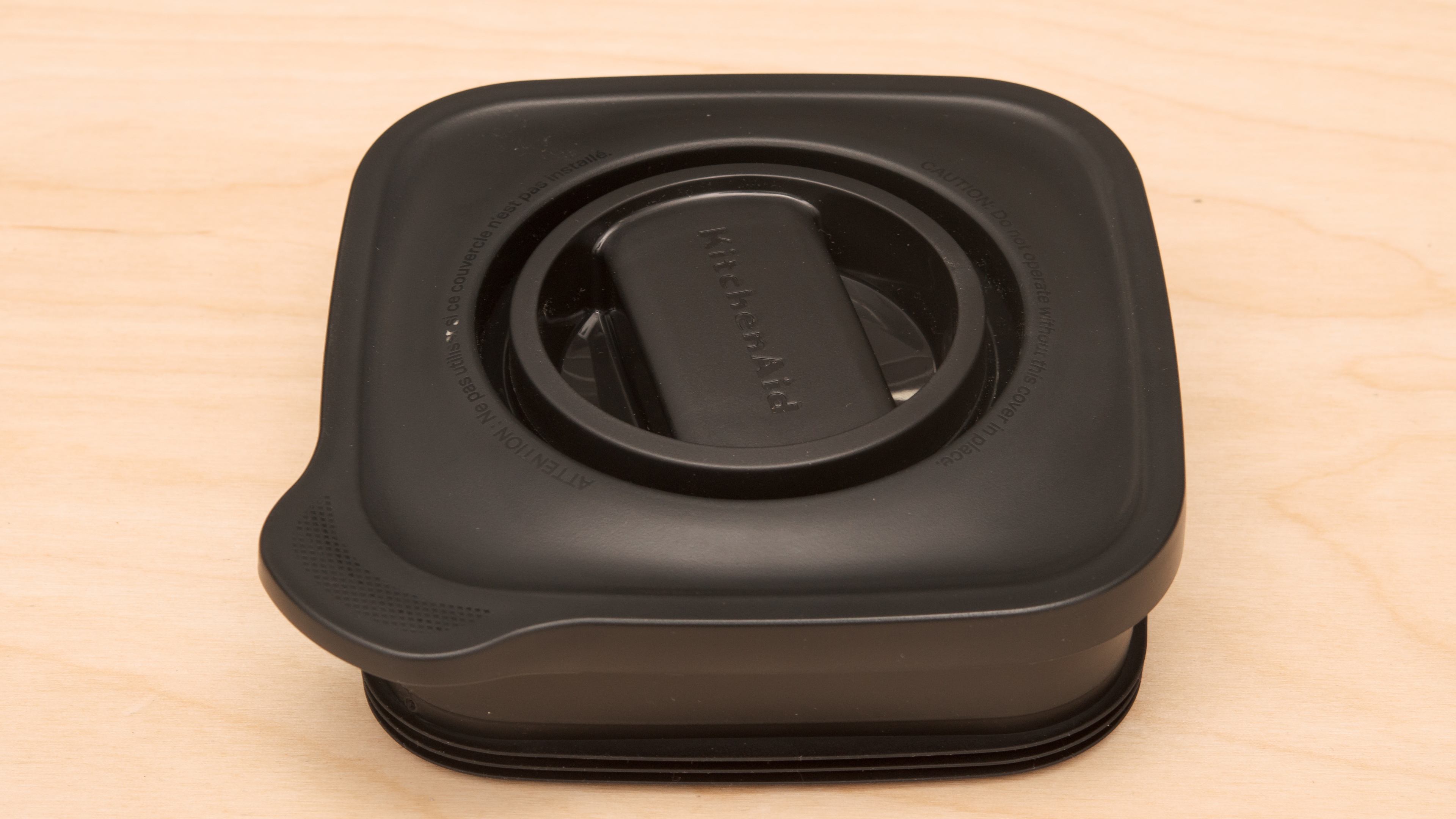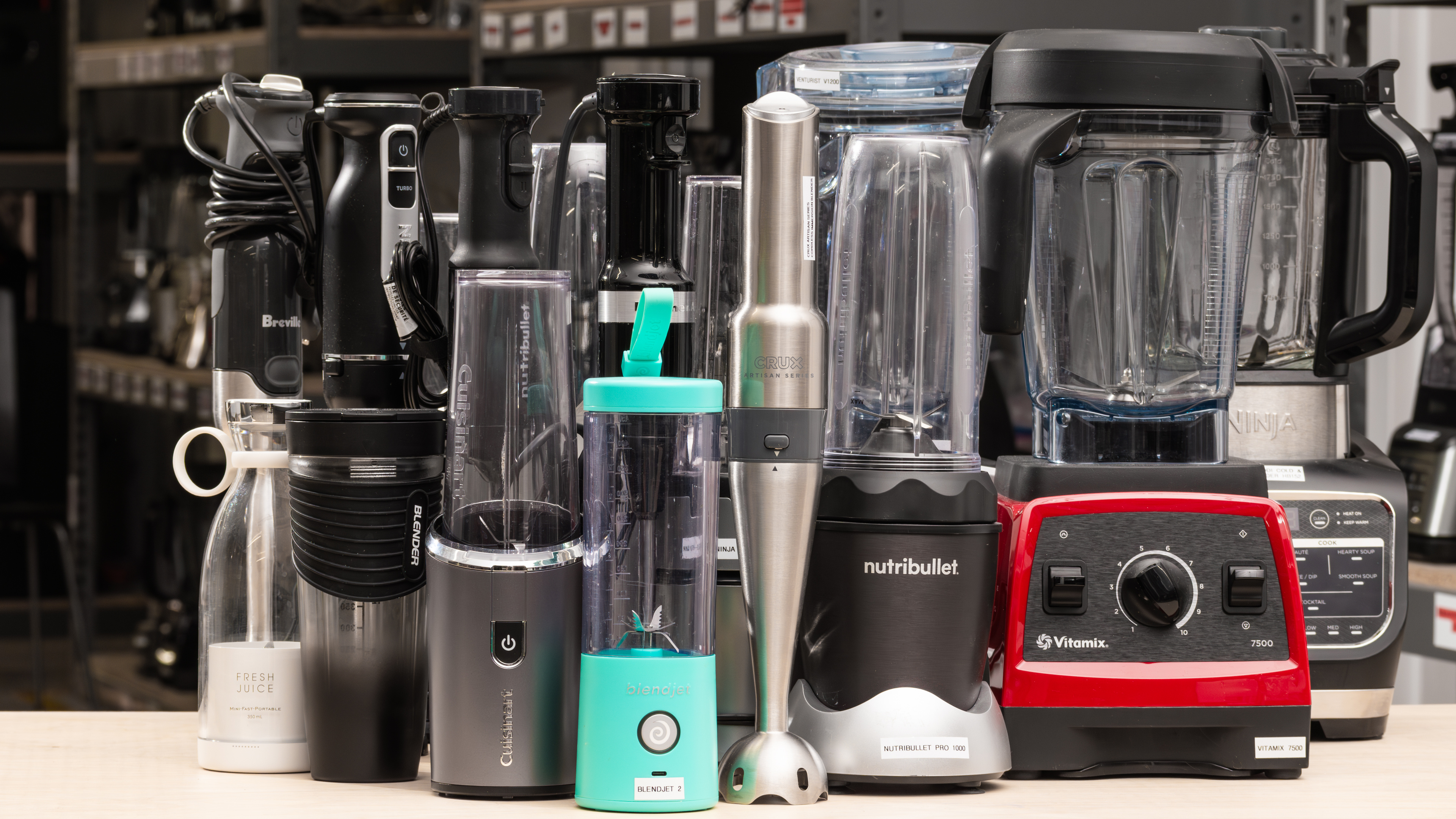
Full-size, immersion, personal blenders, and portable blenders have different strengths and weaknesses. Which is right for you depends on what you plan to make, your budget, and your priorities (easy cleaning? a reasonable noise level?). It's a good idea to decide what kind of blender you want before comparing different models, and if you're not sure, you can find some pros and cons for each type of blender below.
Full-Size Blenders
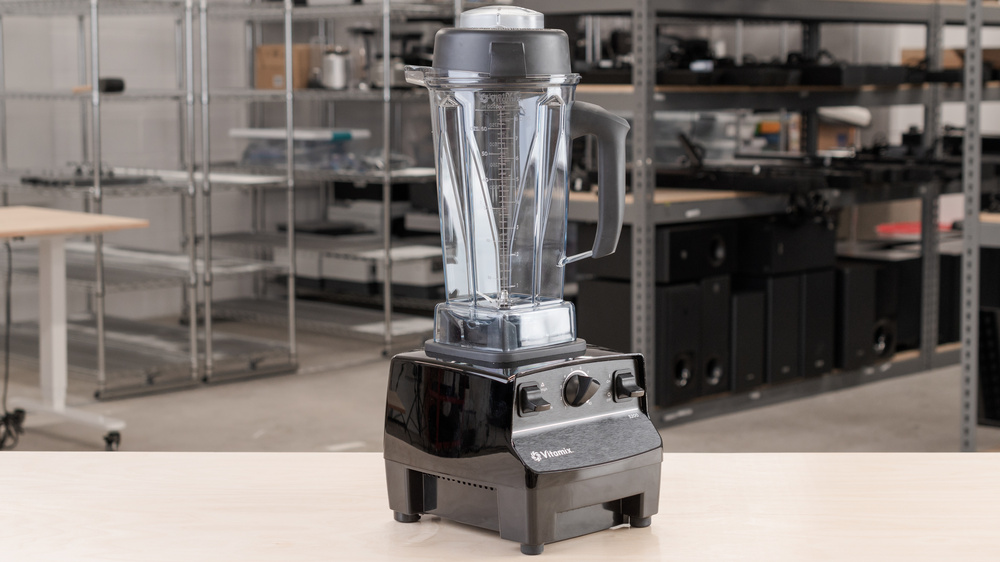 The Vitamix 5200 has a simple design but a wide range of blending speeds.
The Vitamix 5200 has a simple design but a wide range of blending speeds.This is the classic blender design. These blenders come with jars that can fit multiple servings. The best models have a wide range of speed settings and 2-part lids that let you add ingredients mid-blend. Tampers let you stir your recipe without removing the lid or even stopping the machine. They're most likely to have a wide variety of blending programs, which run the blender for a set cycle before shutting off automatically. The jars sit on the motor base, and blades are usually fixed inside the jar.
Full-size blenders always come with a large-capacity pitcher (usually between 48 and 72oz), but its shape is also important. Taller, narrower shapes can help process small batches and keep difficult blends like nut butter closer to the blades. Manufacturers often sell additional, smaller-capacity jars for recipes like single-serve smoothies.
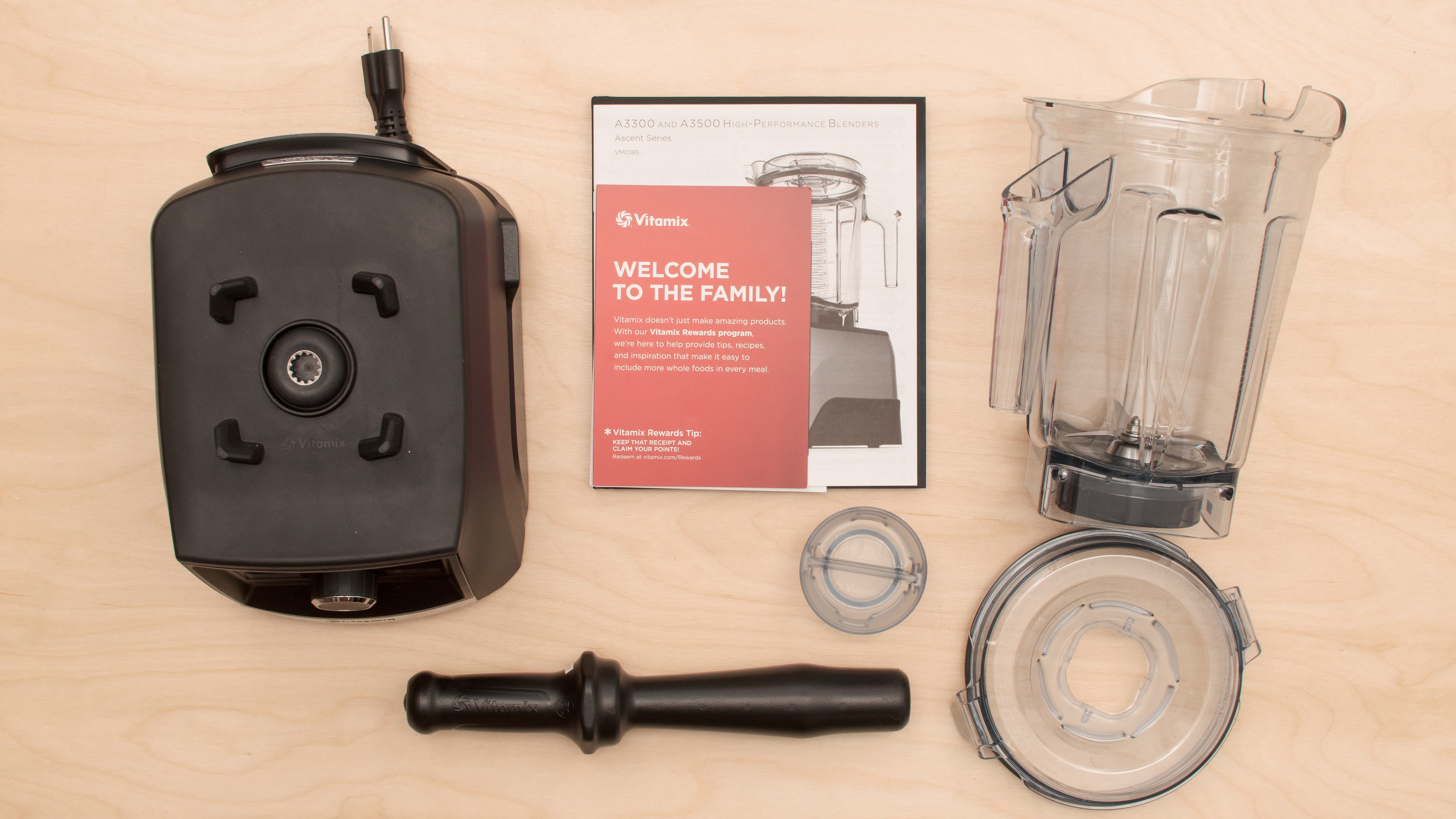 Typical full-size blender accessories (Vitamix A3500)
Typical full-size blender accessories (Vitamix A3500)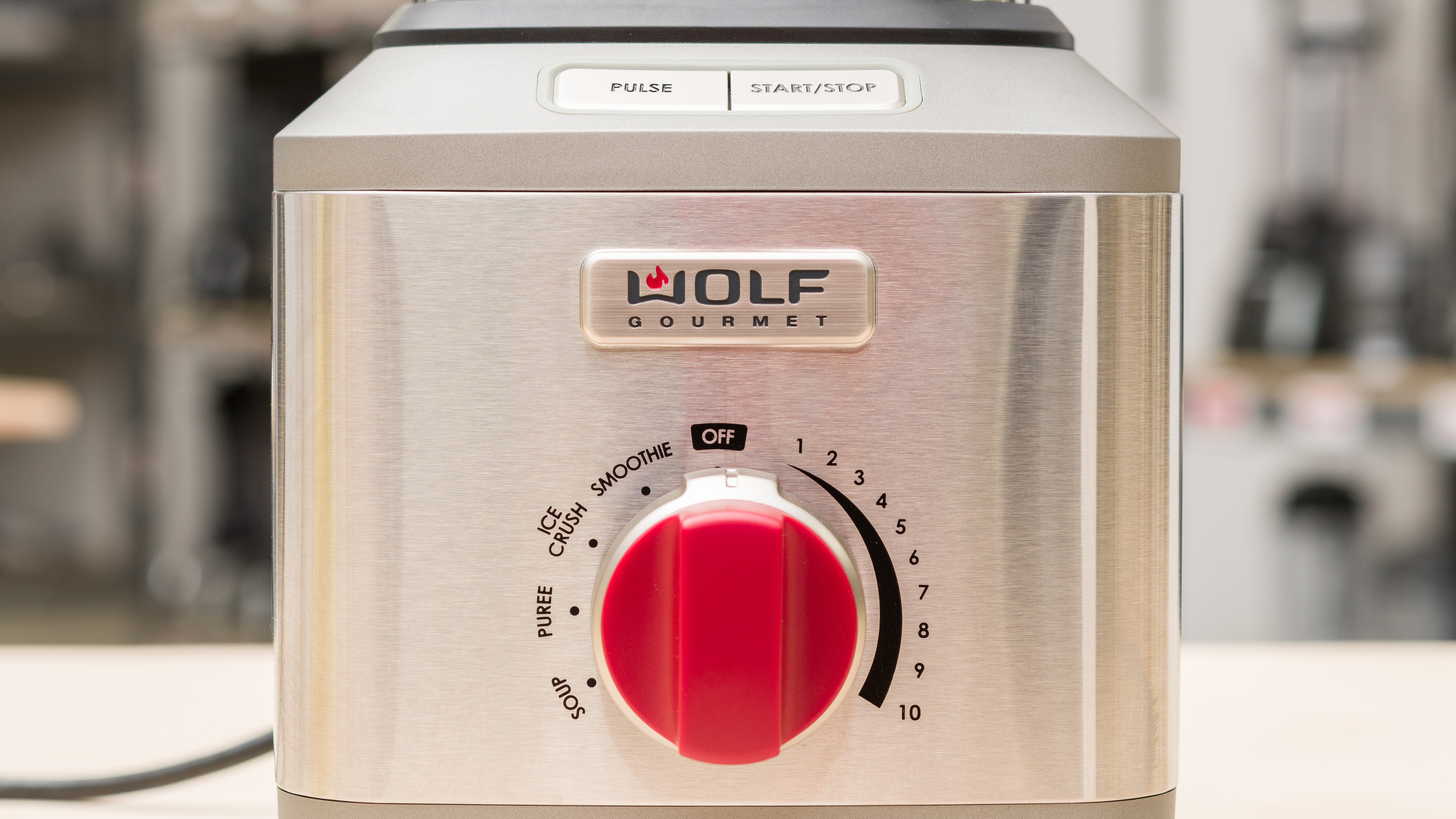 Full-size blenders can offer a wide range of speeds and programs (Wolf Gourmet Pro-Performance)
Full-size blenders can offer a wide range of speeds and programs (Wolf Gourmet Pro-Performance)Full-size blenders are a good choice for recipes like nut butter and hummus. Below, you can compare the process of making nut butter in the Vitamix Propel 510 (left) and the Smeg BLF01 (right). The Vitamix is one of the best full-size blenders for nut butter that we've tested, while the Smeg received one of the lowest scores - not only does it produce worse results, it's a much slower, more difficult process. The Vitamix comes with a tamper, has a relatively narrow jar base, and has more motor power. The Smeg has a wider jar, and ingredients get pushed to the sides away from the blades. It doesn't come with a tamper, so you have no choice but to stop the machine and take off the lid to stir. The Smeg has a narrower range of speeds, and its lowest speed is quite fast, so you don't have the option of starting at a low speed if you want to avoid flinging ingredients away from the blades or splattering up the sides of the jar.
Of course, build quality, noise level, and overall performance are important considerations when choosing any kind of blender. However, for full-size blenders in particular, looking for a range of blending speeds and design features like a 2-part lid is also a good idea. For smaller batches, look for smaller or narrower jars or the option of buying additional jars.
The best full-size blender that we've tested is the Vitamix 5200. It offers all the essential features for a high-end blender, including a wide variety of speed settings, a 2-part lid, tamper, and a fantastic blending performance for all kinds of recipes. The Vitamix A3500 has plenty of extras for those who want blending programs, including programs and a timer. You can read our full list of the best options per price range on our list of the best blenders.
| Get a full-size blender if: | Consider something else if: |
|---|---|
|
|
Personal Blenders
 The Ninja Foodi Power Nutri DUO only has one speed setting, but it has a few programs for automatic blending.
The Ninja Foodi Power Nutri DUO only has one speed setting, but it has a few programs for automatic blending.Personal or bullet blenders were originally designed for single-serve smoothies and are ideal for people who just want a blender for that purpose. Most models have resealable lids that turn the blending jars into travel cups. The blades come as a separate part that screws onto the blending jar like a lid. This design means personal blenders can't hot blend because of a lack of ventilation for steam. They usually have only one speed setting, and you sometimes must push down on the jar to blend. Stirring or adding ingredients mid-blend involves stopping the machine and unscrewing the blade assembly, and blending programs are often non-existent. You can always simulate pulse mode by switching the blender on and off in short intervals, but they aren't ideal if you make a variety of different recipes and want control over the process.
 To-go lids, personal jars, and cup rings are some accessories that can be included with personal blenders (NutriBullet Pro 900)
To-go lids, personal jars, and cup rings are some accessories that can be included with personal blenders (NutriBullet Pro 900) Some feature-packed models have blending programs, but you can't usually adjust the speed (Ninja Foodi Power Nutri DUO)
Some feature-packed models have blending programs, but you can't usually adjust the speed (Ninja Foodi Power Nutri DUO)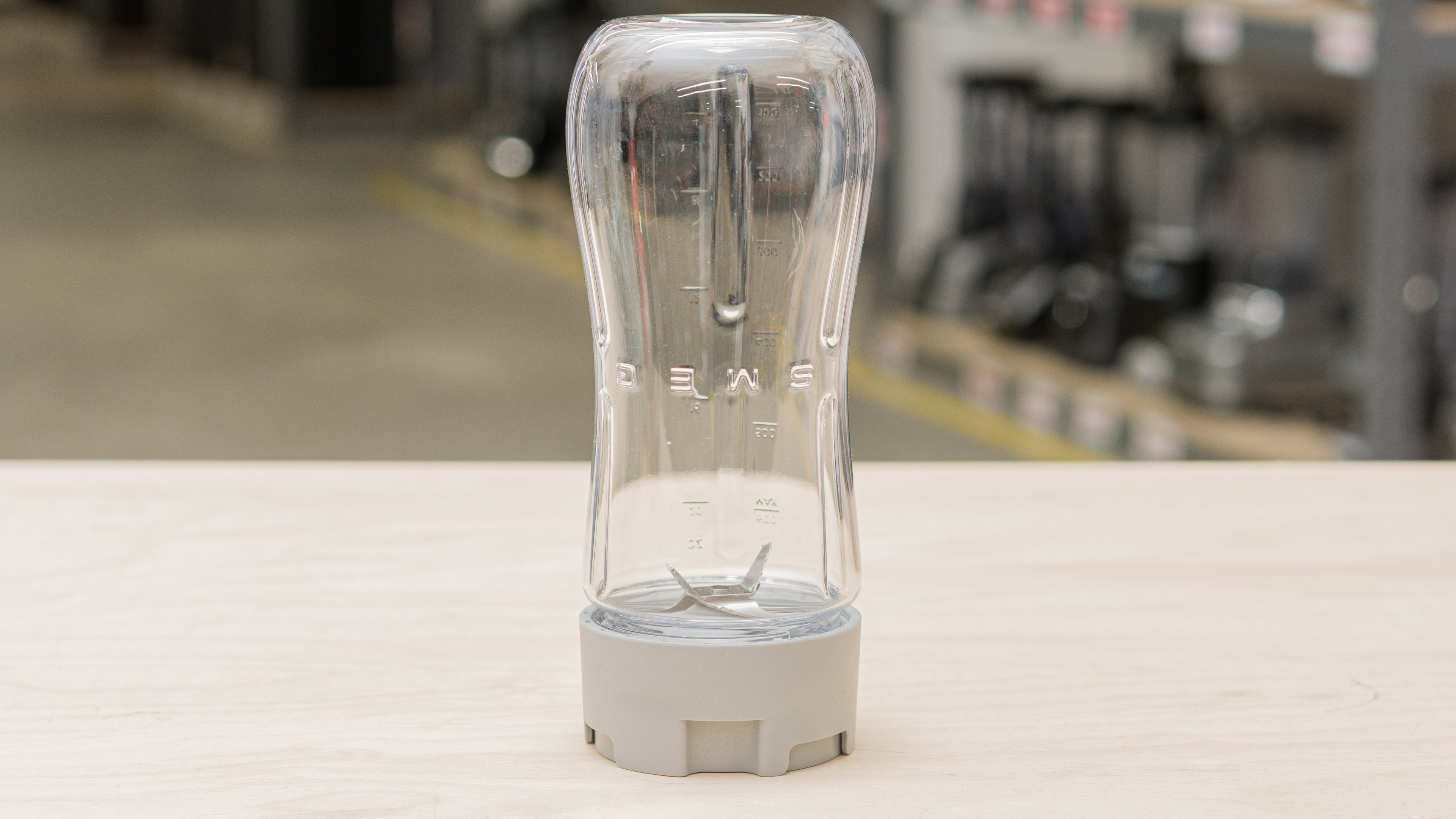 Personal blenders' blade assemblies aren't fixed at the bottom of the jar, but fit on the same way as lids (Smeg Personal Blender PBF01)
Personal blenders' blade assemblies aren't fixed at the bottom of the jar, but fit on the same way as lids (Smeg Personal Blender PBF01)If you plan on only blending single-serve smoothies, personal blenders often outperform full-size blenders, partly because the personal-sized jars help prevent smaller batches from splashing. However, they aren't all equal since the design can affect how easy they are to use as well as the blending performance. Below, you can compare the Beast Health Blender (left) and the Ninja Fit (right) as they blend a single-serve smoothie with kale. The Ninja's push-and-blend design makes it less user-friendly, and it produces a less smooth blend.
When choosing a personal blender, performance when blending fibrous ingredients is important, but you may also want to factor in what accessories are included and the controls.
The best personal blender we've tested is the Ninja Foodi Power Nutri DUO. This personal blender can do a fantastic job with any smoothie recipe, and unlike most personal blenders, it has blending programs, so you don't need to babysit the machine. Thanks to a specially designed jar, it can handle thick recipes better than most single-serve blenders. For a full list of recommendations, check out the best personal blenders and best bullet blenders.
| Get a personal blender if: | Consider something else if: |
|---|---|
|
|
Immersion Blenders
 The Ninja Foodi Power Mixer System is an immersion blender that converts into a hand mixer.
The Ninja Foodi Power Mixer System is an immersion blender that converts into a hand mixer.Immersion blenders, or stick blenders, are hand-held blenders with blades at the end of a blending arm. Instead of pouring ingredients into a blending jar, you can stick the blender into pots, pans, or even a bowl to blend. This makes them great for hot blending since you can puree ingredients while they're simmering on the stove. That's their original purpose, but they can also be useful tools for people who don't blend very often or want to save space since they fit into a kitchen drawer.
Immersion blenders can also be easier to clean since you don't have to try to reach into a blending jar. However, they aren't the most convenient for longer blends since you have to hold the blender the entire time. Some models also have buttons that you have to press continuously to blend.
 Some common accessories for immersion blenders include blending beakers and whisk attachments (Braun MultiQuick 5)
Some common accessories for immersion blenders include blending beakers and whisk attachments (Braun MultiQuick 5) Some immersion blenders have speed adjustment, but many only have a couple of speed settings (NutriBullet Immersion Blender)
Some immersion blenders have speed adjustment, but many only have a couple of speed settings (NutriBullet Immersion Blender)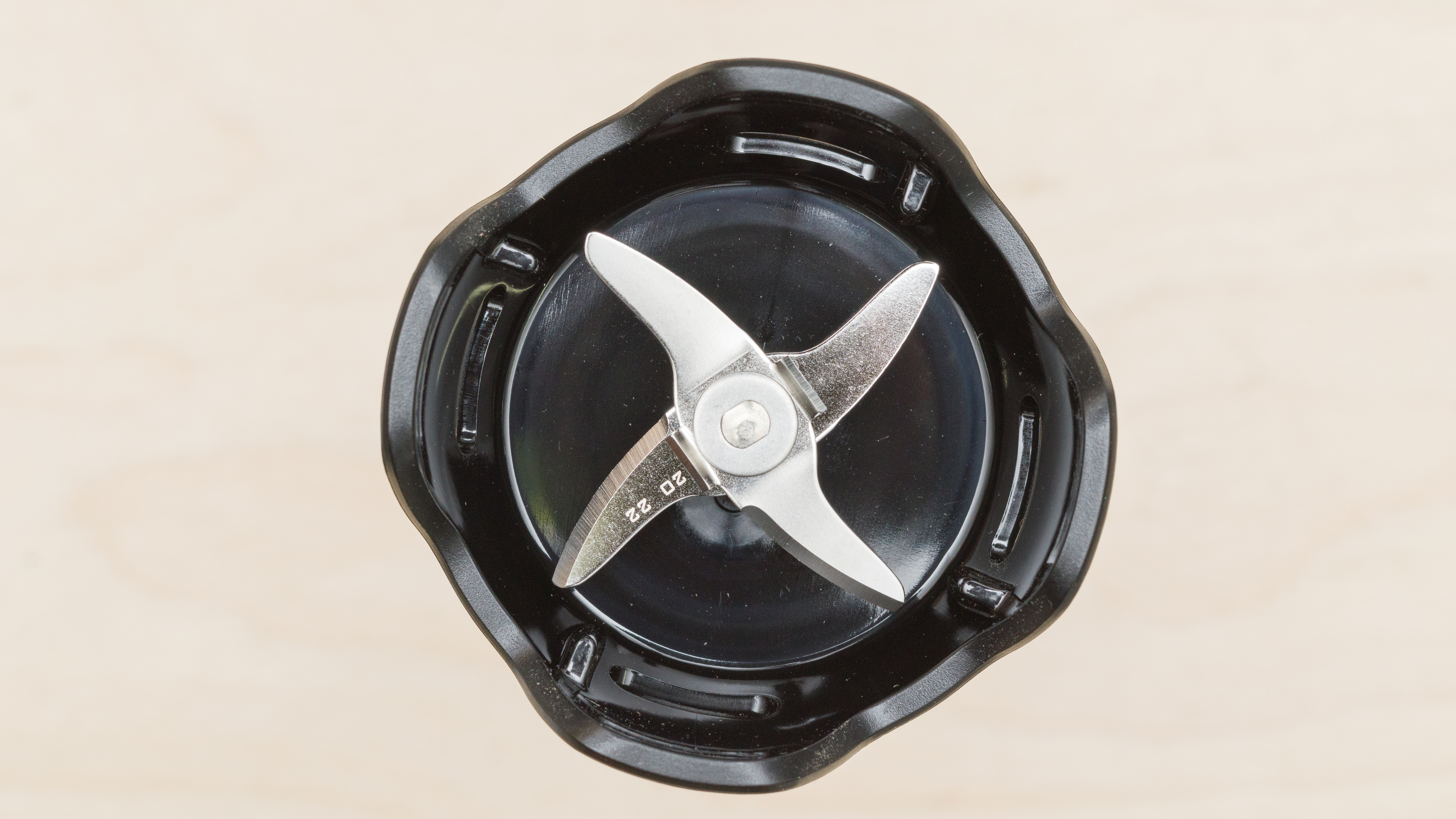 The blades are at the bottom of the blending arm, which is usually detachable from the motor base (Ninja Foodi Power Mixer System)
The blades are at the bottom of the blending arm, which is usually detachable from the motor base (Ninja Foodi Power Mixer System)Immersion blenders are meant for pureeing ingredients for soups and sauces. However, many don't do a great job of smoothly blending fibrous ingredients like leafy greens or broccoli. Plus, if an immersion blender is slow, it's particularly annoying because you have to hold it the whole time. Below, you can compare the Ninja Foodi Power Mixer System (left) and the Bamix The Original (right) blending a kale smoothie. The Bamix is much slower and produces a leafy blend, while the Ninja, which has more motor power and a faster max speed, does a better job much more quickly. However, the results still aren't as smooth as what you get from good full-size or personal blenders.
When choosing an immersion blender, blending performance for fibrous ingredients is important for smooth soups and sauces. You might want to pay particular attention to how quickly a model can process food, as well as the weight of the blender and its controls if you want something easy to use and hold onto. If you might occasionally blend a smoothie, remember that some models' blades can't reach bigger chunks like ice cubes because of the blade guard design.
The best immersion blender we've tested is the Ninja Foodi Power Mixer System. This very well-built blender does an excellent job of blending fibrous ingredients, especially for an immersion blender, and it comes with a beaker and whisk accessory. For a full list of recommendations, check out our list of the best immersion blenders.
| Get an immersion blender if: | Consider something else if: |
|---|---|
|
|
Portable Blenders
 The BlendJet 2's wide jar opening makes it easy to clean and load with ingredients.
The BlendJet 2's wide jar opening makes it easy to clean and load with ingredients. The newest variety of blenders. These are battery-powered blenders, usually meant for single-serves. Unlike personal blenders, the blades are often fixed into the bottom of the jar, and you can drink from the top.
Portable blenders don't usually have much power and won't produce the best blending results, but they're quiet and useful for blending on the go when you're camping or during your lunch break. However, their limited battery life means you can't blend very many servings in a row.
 Portable blenders usually come with one jar and lid, plus the motor base. Of course, you also get a charging cable (BlendJet 2)
Portable blenders usually come with one jar and lid, plus the motor base. Of course, you also get a charging cable (BlendJet 2) Portable blenders typically have simple controls, with just one button that runs short blending cycle (PopBabies Portable Blender)
Portable blenders typically have simple controls, with just one button that runs short blending cycle (PopBabies Portable Blender) Unlike conventional personal blenders, portable blender blades are usually fixed in the jar or fixed onto the motor base (NutriBullet GO)
Unlike conventional personal blenders, portable blender blades are usually fixed in the jar or fixed onto the motor base (NutriBullet GO)Portable blenders can deliver in convenience what they can't in performance. However, because some come with blades attached to the motor base (instead of fixed in the jar or on a separate assembly), they can be hard to clean, which isn't ideal if you're trying to make quick and easy blends. Below, you can compare the cleaning process for the BlendJet 2 and the PopBabies Portable Blender. The BlendJet's design makes reaching the blades and into the jar easy, while the PopBabies' blades are difficult to reach through the small jar opening.
Like immersion and personal blenders, performance with fibrous ingredients is likely the most important performance aspect for portable blenders. However, since portable blenders vary quite a bit in design and should be easy to use on the go, it's especially important to consider how easy it is to clean, carry around, and load ingredients.
The best portable blender we've tested is the Ninja Blast. It does a better job of blending fibrous ingredients than other portable models we've tested, so fruit smoothies turn out smoother. Its sturdy build and convenient lid design also help set it apart. For a full list of recommendations, check out our best portable blenders article.
| Get a portable blender if: | Consider something else if: |
|---|---|
|
|
Conclusion
Once you've decided what kind of blender you want, you might want to continue your search by checking out our recommendations for the best blenders. To help you choose between popular models, we have a handy comparison of Vitamix vs. Blendtec and Ninja vs. NutriBullet blenders.
